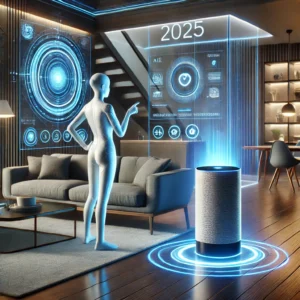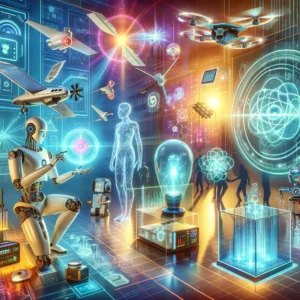How Renewable Energy Tech Will Power Homes in 2025

How Renewable Energy Tech Will Power Homes in 2025.
Discover how renewable energy technology is transforming homes in 2025. Explore the latest trends in solar, wind, and smart energy solutions for a sustainable future.
The transition to renewable energy is accelerating, and by 2025, the way we power our homes will be more efficient, affordable, and eco-friendly than ever before. Innovations in solar power, wind energy, battery storage, and smart grid technology are making clean energy more accessible, helping homeowners reduce their carbon footprint while cutting electricity costs.
This article explores how renewable energy tech will revolutionize home energy systems in 2025, making homes more self-sufficient and energy-efficient.
—
1. Next-Generation Solar Panels: Higher Efficiency, Lower Costs
Solar energy remains a leading renewable power source, and in 2025, next-generation solar panels will be more efficient than ever.
What’s New in 2025?
Perovskite Solar Cells: These advanced materials offer higher efficiency than traditional silicon panels, converting more sunlight into electricity.
Bifacial Panels: These capture sunlight from both sides, increasing energy output.
Solar Skins & Transparent Panels: Aesthetic solar solutions that blend seamlessly into rooftops and windows.
Lower Costs: Mass production and government incentives will make solar installations more affordable for homeowners.
READ ALSO: The Best Cloud Storage Options for 2025: A Comprehensive Comparison.
Why It Matters
With higher efficiency and lower costs, homeowners can generate more power with fewer panels, making solar a more attractive investment.
—
2. Home Wind Turbines: Small, Powerful, and Efficient
While wind energy is commonly associated with large wind farms, small-scale wind turbines are gaining popularity for residential use.
Key Advancements in 2025
Vertical Axis Wind Turbines (VAWTs): More compact, quieter, and effective even in low-wind areas.
Smart Wind Turbines: Equipped with AI sensors to optimize energy production.
Hybrid Solar-Wind Systems: Combining solar panels and wind turbines for continuous renewable energy generation.
Why It Matters
For homeowners in windy regions, residential wind turbines can provide consistent power, even during cloudy days when solar panels are less effective.
—
3. Smart Home Batteries: Storing More Energy for Longer
Battery storage technology is evolving rapidly, allowing homeowners to store excess energy and use it when needed.
Breakthroughs in 2025
Solid-State Batteries: Higher energy density, faster charging, and a longer lifespan than traditional lithium-ion batteries.
AI-Powered Energy Management: Smart systems that predict energy demand and optimize battery usage.
Second-Life EV Batteries: Recycled electric vehicle (EV) batteries repurposed for home energy storage.
Why It Matters
With better storage solutions, homeowners can use stored solar or wind energy at night or during power outages, reducing reliance on the grid.
—
4. Smart Grids & AI-Powered Energy Management
By 2025, smart grids will transform how homes consume and share energy.
What’s Changing?
AI-Driven Energy Management: Homes will automatically adjust energy use based on demand and electricity prices.
Vehicle-to-Grid (V2G) Integration: EVs will act as mobile energy storage, supplying power back to homes and the grid when needed.
Decentralized Energy Trading: Homeowners with solar panels and batteries can sell excess energy to neighbors, reducing waste.
Why It Matters
Smart grids make home energy more efficient and cost-effective, while AI-powered management ensures minimal waste and lower electricity bills.
—
5. Heat Pumps & Geothermal Energy: Efficient Heating & Cooling
Traditional heating and cooling systems are being replaced by heat pumps and geothermal energy for greater efficiency.
Advancements in 2025
High-Efficiency Heat Pumps: Work in extreme temperatures, making them viable for all climates.
Geothermal Heat Pumps: Use underground energy to heat and cool homes with minimal electricity use.
Smart HVAC Systems: AI-driven climate control optimizes temperature settings for comfort and efficiency.
Why It Matters
With rising electricity prices, energy-efficient heating and cooling will help homeowners save money while reducing carbon emissions.
—
6. Solar Roof Tiles: Blending Aesthetics with Functionality
Tesla and other companies have revolutionized solar roof tiles, which integrate seamlessly into roofing materials.
What’s New in 2025?
More Affordable: Mass production will make solar tiles cheaper than traditional roofing.
Increased Durability: Built to withstand extreme weather conditions.
Higher Energy Efficiency: Improved materials for better energy absorption.
Why It Matters
Homeowners can now choose solar-integrated roofing without sacrificing aesthetics, making renewable energy adoption easier.
—
7. Energy-Efficient Smart Appliances
In 2025, smart home appliances will play a crucial role in energy conservation.
Trending Technologies
AI-Optimized Refrigerators & HVAC Systems that adjust settings based on usage patterns.
Smart Water Heaters that heat water only when needed.
Energy Monitoring Apps that provide real-time insights into electricity consumption.
Why It Matters
By using energy-efficient appliances, homeowners can cut down on unnecessary power consumption, leading to lower energy bills.
—
8. Hydrogen Fuel Cells: The Next Big Thing in Home Energy
Hydrogen power is gaining traction as a clean alternative to traditional energy sources.
What’s Coming in 2025?
Hydrogen-Powered Generators for off-grid homes.
Home Hydrogen Storage Systems for storing excess renewable energy.
Hydrogen Fuel Cell Vehicles that double as power sources for homes.
Why It Matters
Hydrogen fuel cells offer zero-emission energy, making them a clean and efficient backup power source.
—
Final Thoughts: A Sustainable Future for Home Energy
By 2025, renewable energy technology will be smarter, cheaper, and more efficient than ever before. Homeowners will have multiple options for sustainable energy, from high-efficiency solar panels and wind turbines to AI-powered smart grids and hydrogen fuel cells.
Embracing these advancements means lower energy costs, greater energy independence, and a healthier planet. The future of home energy is green, smart, and ready for the next generation!




